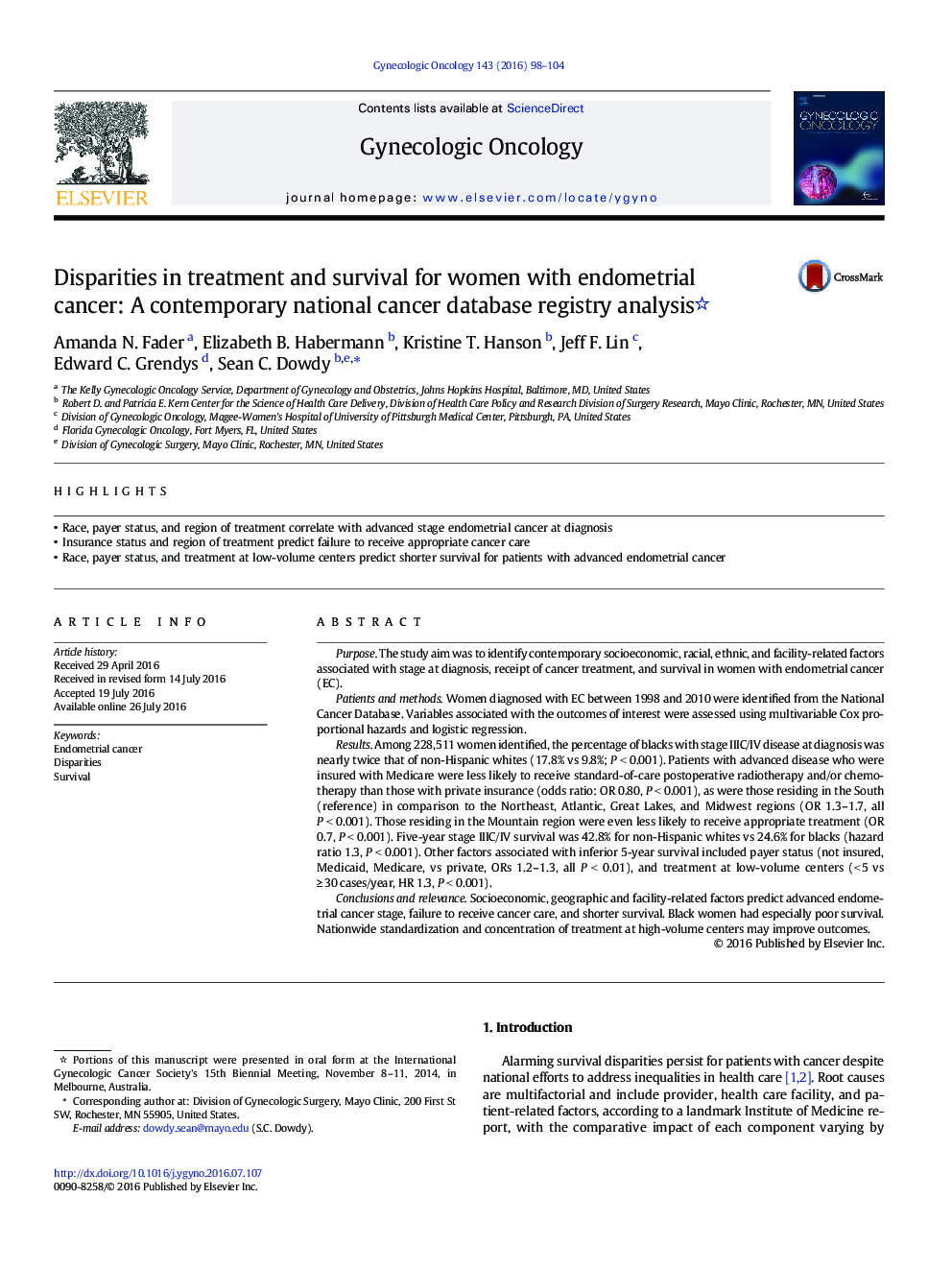| Article ID | Journal | Published Year | Pages | File Type |
|---|---|---|---|---|
| 3942415 | Gynecologic Oncology | 2016 | 7 Pages |
•Race, payer status, and region of treatment correlate with advanced stage endometrial cancer at diagnosis•Insurance status and region of treatment predict failure to receive appropriate cancer care•Race, payer status, and treatment at low-volume centers predict shorter survival for patients with advanced endometrial cancer
PurposeThe study aim was to identify contemporary socioeconomic, racial, ethnic, and facility-related factors associated with stage at diagnosis, receipt of cancer treatment, and survival in women with endometrial cancer (EC).Patients and methodsWomen diagnosed with EC between 1998 and 2010 were identified from the National Cancer Database. Variables associated with the outcomes of interest were assessed using multivariable Cox proportional hazards and logistic regression.ResultsAmong 228,511 women identified, the percentage of blacks with stage IIIC/IV disease at diagnosis was nearly twice that of non-Hispanic whites (17.8% vs 9.8%; P < 0.001). Patients with advanced disease who were insured with Medicare were less likely to receive standard-of-care postoperative radiotherapy and/or chemotherapy than those with private insurance (odds ratio: OR 0.80, P < 0.001), as were those residing in the South (reference) in comparison to the Northeast, Atlantic, Great Lakes, and Midwest regions (OR 1.3–1.7, all P < 0.001). Those residing in the Mountain region were even less likely to receive appropriate treatment (OR 0.7, P < 0.001). Five-year stage IIIC/IV survival was 42.8% for non-Hispanic whites vs 24.6% for blacks (hazard ratio 1.3, P < 0.001). Other factors associated with inferior 5-year survival included payer status (not insured, Medicaid, Medicare, vs private, ORs 1.2–1.3, all P < 0.01), and treatment at low-volume centers (< 5 vs ≥ 30 cases/year, HR 1.3, P < 0.001).Conclusions and relevanceSocioeconomic, geographic and facility-related factors predict advanced endometrial cancer stage, failure to receive cancer care, and shorter survival. Black women had especially poor survival. Nationwide standardization and concentration of treatment at high-volume centers may improve outcomes.
